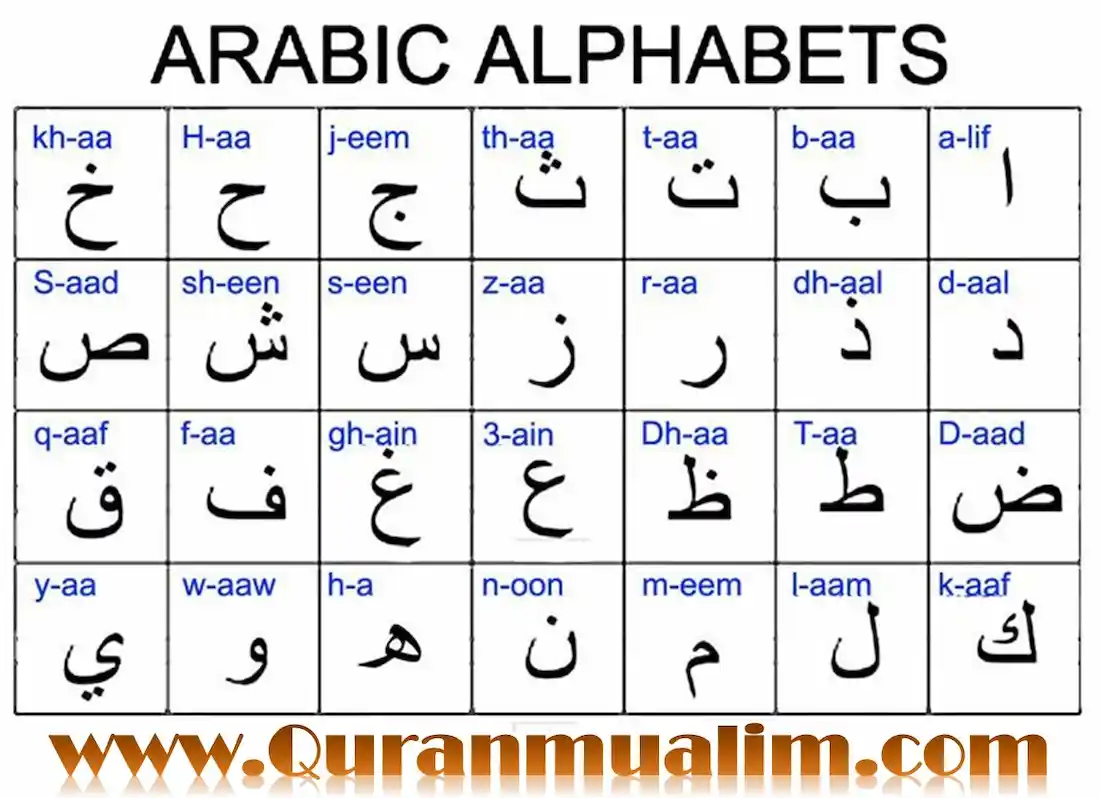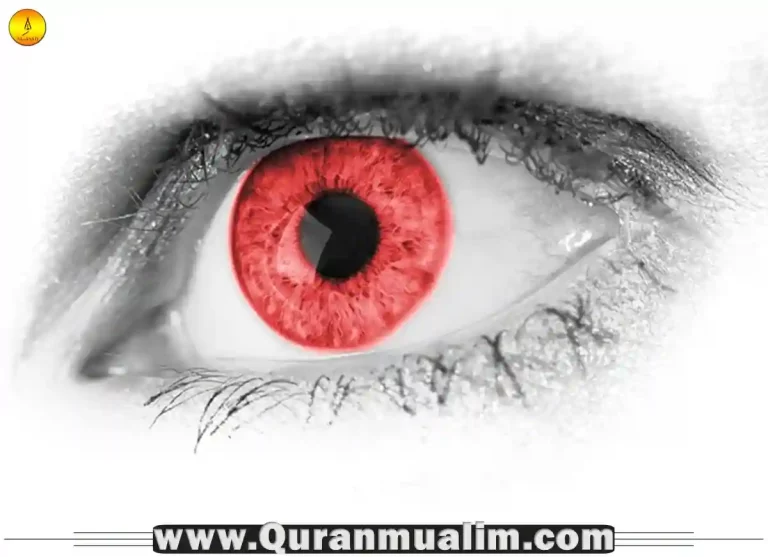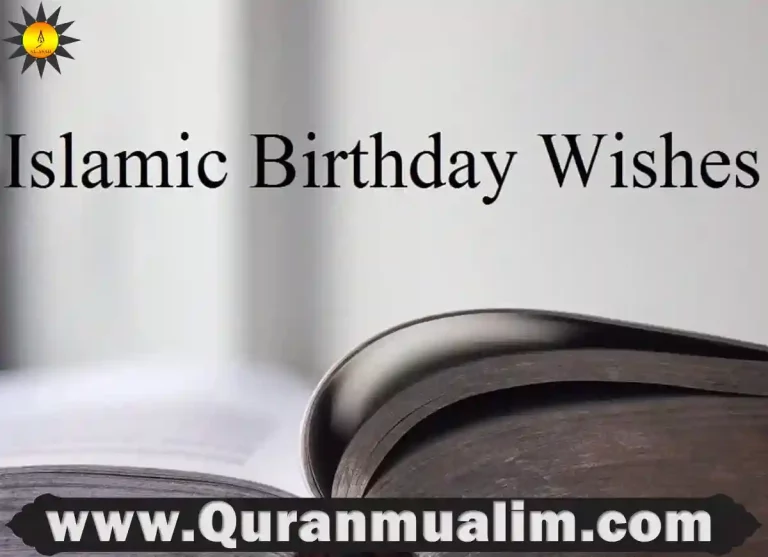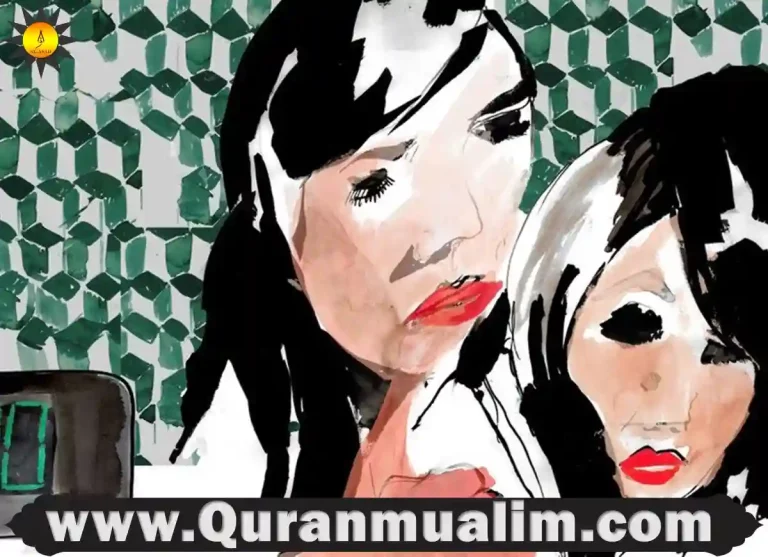Arabic Alphabet Chart – It’s widely used to teach Parts of Speech and to help students understand any Language.
However, it is much more beneficial to begin with an Arabic Alphabet (Arabic Letters), as it is the best starting point. How can we make sentences and words if we don’t know how to create them?
Quran Corner
Suggested Read: wbw quran, houseofquran, all surah in quran, quran list of surahs, how many chapters are in the quran, quran with urdu translation pdf, the chapters of the qur an, surah fatiha english translation pdf
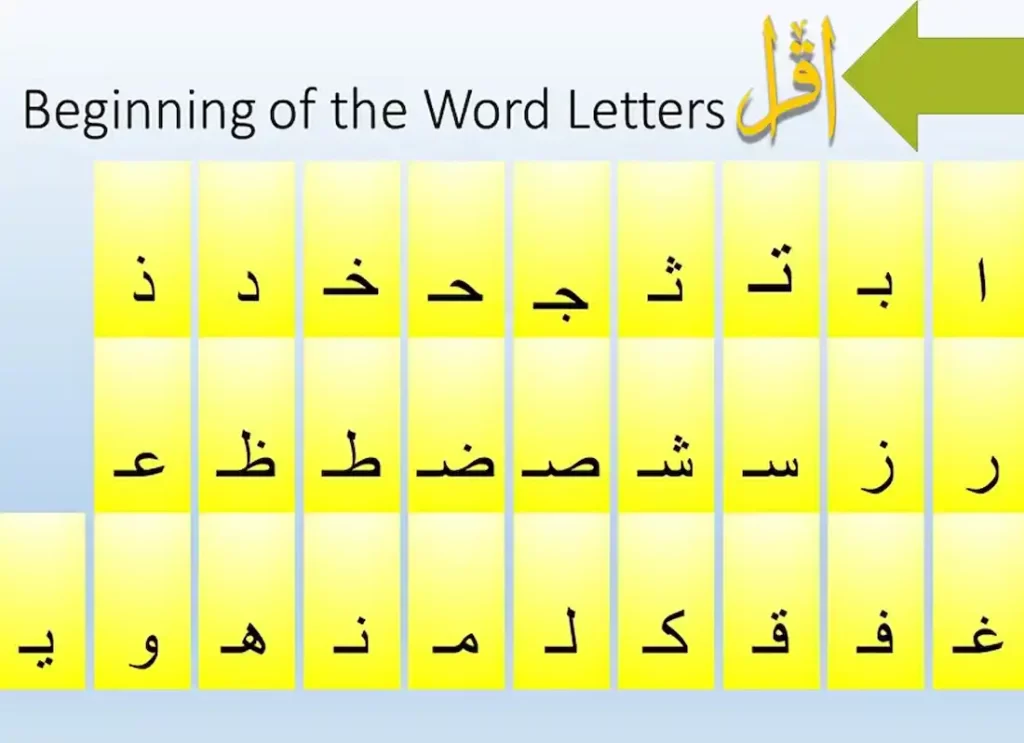
Arabic Alphabet Chart [29]
| pronunciation | Transliterated | Isolated | Isolated | pronunciation | Initial | Medial | Final | Transcription | |||||
| ‘alif | alif | Apple – Like A | A | ||||||||||
| ba | ba | b | Baby like B | b | b | b | b | ||||||
| ta | ta | t | Like T in Tree | t | t | t @ | t | ||||||
| tha | th is a | th | Like the Th in Theory | th | th | th | th | ||||||
| jiym | jim | j | Sometimes, like the G in Girl and sometimes like the J in Jar | j | j | j | j | ||||||
| Ha | a | H | As the h in He yet light pronunciation | H | H | H | |||||||
| kha | kh A | kh | Like the Ch in Bach’s name | kh | kh | kh | kh | ||||||
| dal | dal | d | Like the D in Dad | d | d | d | d | ||||||
| dhal | z HTML3_ al | dh | Like the Th in The | dh | dh | dh | |||||||
| ra | ra | r | As the R in Ram | r | r | r | r | ||||||
| zay | zay | z | Like the Z in the zoo | z | z | z | z | ||||||
| siyn | sin | s | Similar to the S in See | s | s | s | s | ||||||
| shiyn | in | sh | Like the Sh In She | sh | sh | sh | |||||||
| Sad | s Ad | S | Similar to the S in Sad, but heavier in pronunciation | S | S | S | s | ||||||
| Dad | Ad | D | Similar to the D in Dead, but heavier in pronunciation | D | D | D | |||||||
| Ta | t A | T | Similar to the T in Table, but heavy on pronunciation | T | T | T | t | ||||||
| Za | za | Z | Similar to Zorro, but heavier in pronunciation | Z | Z | Z | |||||||
| `aynin | `ain | ` | Sometimes they substitute the sound with an A sound, such as Ali for Ali/ly. | ` | ` | ` | ` | ||||||
| Gayn | gh | G | Like the Gh of Ghandi | G | G | G | |||||||
| fa | fa | f | Like the F in Fool | f | f | f | f | ||||||
| qaf | qaf | q | The pronunciation sounds like the Q in Queen, but with a heavy velar sound | q | q | q | q | ||||||
| kaf | kaf | k | Like the K in Kate | k | k | k | k | ||||||
| lam | lam | f | The L in Love is like the L | l | l | l | l | ||||||
| miym | mim | m | Like the M in Moon | m | m | m | m | ||||||
| nuwn | nun | n | Like the N in Noon | n | n | n | n | ||||||
| ha | ha | h | Like the H in He | h | h | h | h | ||||||
| waw | waw | , | As the W in the response of astonishment: WAW! | w | —- | w | W(aw, au, u) | ||||||
| ya | ya | y | You are the Y in Y | y | y | y | Y (ay. ai. i) | ||||||
| hamza@ | hamza | ‘u i ‘a | It is regarded as the latter, because it differs depending on context and case. | The latter will be addressed separately | ‘ w’ | y’ | y’ | ||||||
Arabic Alphabet Chart – The above chart shows that Arabic letters are 29 and Arabic letter hamza is a distinct Letter. You will also see dashes and other symbols which appear on Arabic letters above or below them. These are called Arabic vowels. ).
Arabic Corner
Suggested Read: arabic books for beginners free, learn quranic arabic free, quran tutor online for free, islamic healing prayer, how many rakats in each prayer, ayat kursi in english , dates in arabic
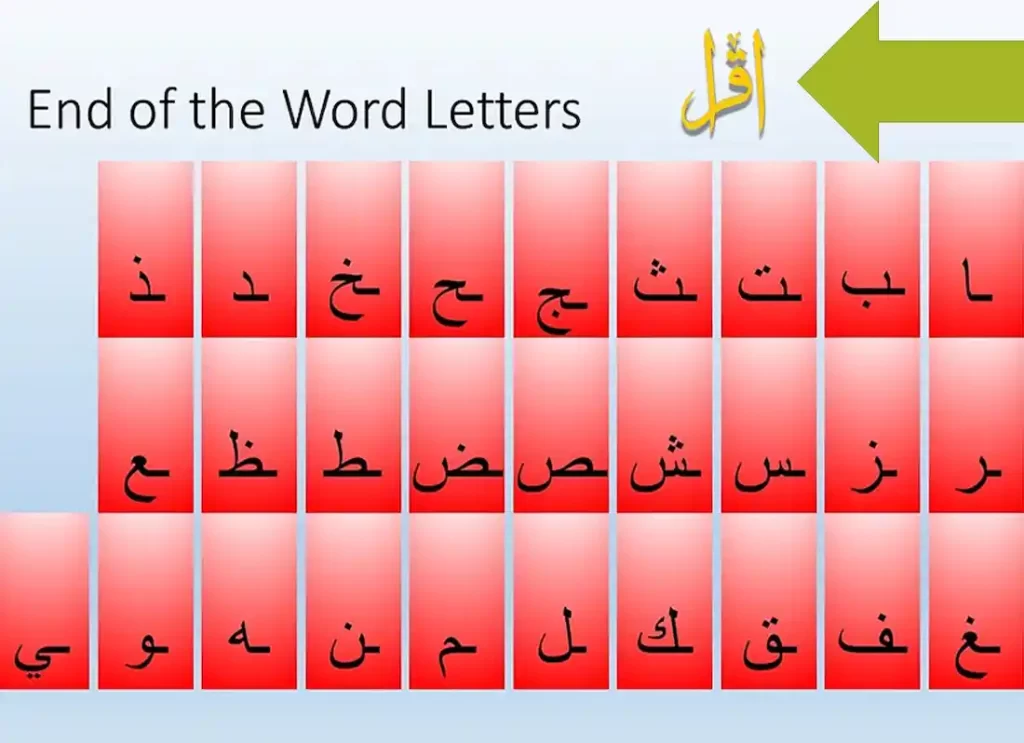
Take a look at these 3 Arabic Characteristics Of Letters:
To create words, A-letters are combined.
B- Words can have vowels (described later).
Some letters are marked with dots
Didn’t you know?
Alphabet 11 Arabic structure is unique to it.
By connecting 22 Arabic letters, you can make words out of them.
33 Arabic Alphabets are written and read from left-to-right.
There are three types of Arabic letters writing: medial, initial and final. Shapes that vary depending on their location.
5- Letters that do not contain an isolated or final letter are usually identical in form.
66. The form of letters in the medial or first positions are generally identical.
Seven-There are many writing styles, fonts and printing options for Arabic. The most popular is /annaskhor (normal Writing) Lnaskh, and /arruqa/ LRIQ@. The /an-naskh/ writing format is best for learners and readers.
By examining the spelling of Arabic, you can determine its pronunciation.
99 Arabic letters are broken down into two groups based on their geographical location
Fiqah Corner
dua for stress and anxiety, sufism definitie, can i divorce my wife for not sleeping with me, islamic healing prayer, muslim story of creation, are ephemeral tattoos haram
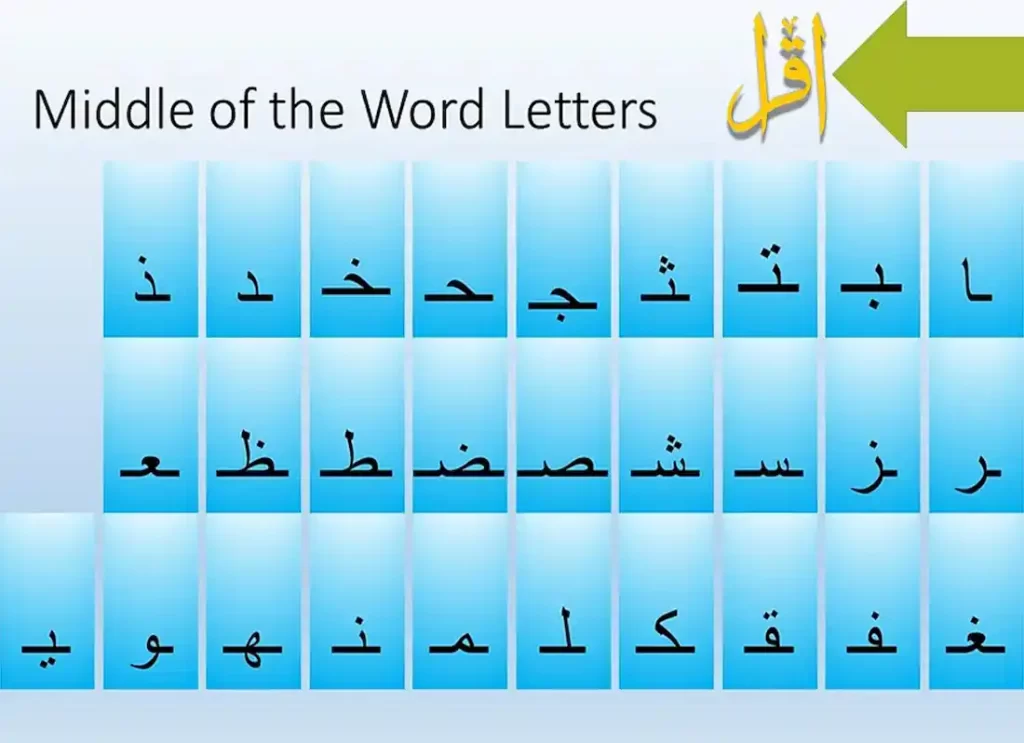
1 St Group
It is impossible to join the left.
You can join the letter to another letter, but not to a third.
Then, all Arabic Letters can be joined on both ends with the exception of those below. (See the table below).
2 and Group
Shapes can change depending on where they are located in the world.
| 1st Group (Non-Connecting Letters) | 1 st Group Examples | 2nd Group (Connecting Letters) | 2 nd Group Examples |
| alif | Sama /sama/ For “sky” | `ain ` | Refer to the Arabic Letters’ Writing Formulas (initial, medial, and final). |
| Dal d | ldahr /ad-dahr/ For “past life” | ghain | Refer to the Arabic Letters’ Writing Formulas (initial, medial, and final). |
| zal dh | ldhahb /az-zahab/ For “gold” | kaf k | Refer to the Arabic Letters’ Writing Formulas (initial, medial, and final). |
| ra | lramadiy /ar-ramady/ For “grey color” | ha h h | Refer to the Arabic Letters’ Writing Formulas (initial, medial, and final). |
| zay z | lzaman /az-zaman/ For the “past” | ya y | Refer to the Arabic Letters’ Writing Formulas (initial, medial, and final). |
| waw | lwaTan /al-watan/ For “homeland” | Hamza ‘u i ‘a | Refer to the Arabic Letters’ Writing Formulas (initial, medial, and final). This letter will be discussed later |
10- Very few Arabic Written Letters can be distinguished by their dots :
| ba ta t Tha th | jim j ha H kha kh | dal d Zal dh ra Zay z |
| sin s Shin sh | Sad S dad D | ta T Za Z |
| `ain ` Ghain | fa f qaf q | nun n |
11- There are phonetically-wise confused Arabic Written Letters
| Light Sound in Pronunciation | Heavy Sound in Pronunciation |
| ta | taT |
| Dal d | dad D |
| zal dh | za |
| sin s | sad S |
| Kaf k | qaf q |
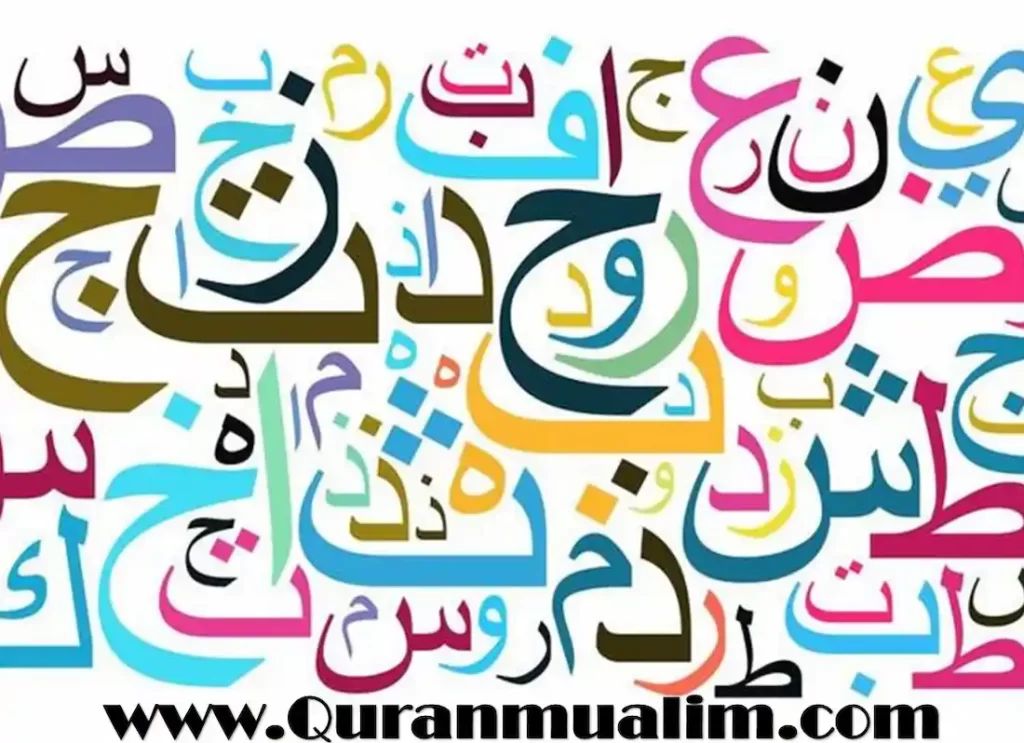
Arabic Alphabet Chart – 12The Letter Ta T Sometimes it is written in its final form with two dots above it. This is the “ta Marbutah” form of this letter.
13- As shown below, the shapes of Qaf and fa in Moroccan Written Arabic differ in their forms.
| Position in word | Isolated | Initial | Medial | Final |
| Form for the letter fa of Moroccan Arabic | F | F | F | F |
| Form of Arabic letter qaf | F | Q | Q | F |
Arabic Alphabets Chart at One Place
Arabic alphabet chart: The 28 letters explained
| Letter title | Forms | The closest English sound | |
| alif | Isolated: End: Middle: Initial: | Aah | |
| baa | Isolated: , b End: . b Middle: initial: | b (The Arabic letter p is not used in Arabic so the Arabic speaker pronounces ‘p’ as ‘b’. | |
| taa | Isolated: , t End: t Middle: t Initial: t | t | |
| Tha | Isolated: , th End: the Middle: , th Initial: th | Soft ‘th,’ as in thin | |
| Jiim | Isolated: j End: j Middle: j Initial: j | j/zh | |
| haa | Isolated: End: H Middle: H Initial: H | There is no equivalent. Instead, use soft h as if you were blowing out candles from your throat. | |
| Khaa | Isolated: , kh Middle: kh End: kh Initial: kh | Scottish lo and ch almost as if gargling | |
| Dal | Isolated: End: d Middle: d Initial: d | d |
| Isolated: End: Middle: Initial: dh | Hard ‘th,’ as in is | |
| raa | Isolated: or End: or Middle: or Initial: r | Softly rolled ‘r”, as in cu rd |
| Zay | Isolated: , z End: z Middle: z Initial: z | Z |
| siin | Isolated: , s End: s Middle: s Initial: s | S |
| shiin | Isolated: s End: sh Middle: sh Initial: sh | sh |
| Saad | Isolated: – End: Middle: S Initial: S | There is no equivalent but it is similar to ss |
| Dhad | Isolated: D End: D Middle: D Isolated: D | There is no equivalent, but an emphatic D similar to dawn at the back of your throat |
| Taa | Isolated: End: T Middle: T Initial: T | There is no equivalent but an emphatic “T” |
| Dhaa | Isolated: Z End: Z Middle: Z Initial: Z | There is no equivalent but a strong ‘th’ |
| hain | Isolated: ` End: ` Middle: ` Initial: ` | There is no equivalent. However, it’s a guttural stop that sounds similar to the pause in “uh-oh”. |
| Ghain | Isolated: End: Middle: Initial: | There is no equivalent but it is similar to the sound of gurgling (‘gh’/ ‘gr). |
| Faa | Isolated: , f End: f Middle: f Initial: f | F |
| qaaf | Isolated: Q End: Q Middle: Q Initial: Q | caught from behind the throat. |
| kaaf | Isolated: k End: k Middle: k Initial: k | K |
| laam | Isolated: l End: l Middle: l Initial: l | l |
| miim | Isolated: , m End: m Middle: m Initial: m | m |
| Now | Isolated: , n End: n Middle: n Initial: n | n |
| haa | Isolated: h End: h Middle: h Initial: h | h |
| Waw | Isolated: , w End: w Middle: , w Initial: w | w/oo is a form of oot |
| Yaa | Isolated: and End: y Middle: y Initial: y | y/ee is the t form of m ee t |
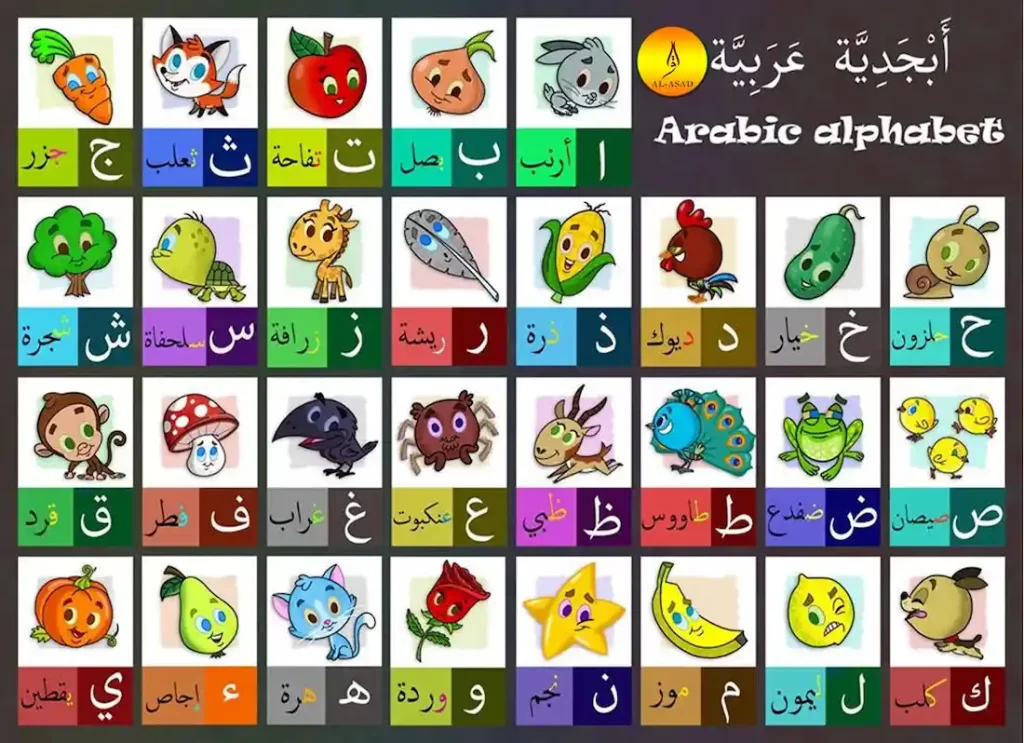
Arabic Language
Arabic Alphabet Chart – Arabic is a Semitic language that is spoken by approximately 221 million people in Afghanistan, Chad and Chad.
There are over 30 varieties of colloquial Arabic, which include:
Egyptian is spoken in Egypt by approximately 50 million people. It is probably the most widely used variation due to the popularity of Egyptian-produced films and television shows.
Algerian can be spoken by approximately 22 million Algerians
Maghrebi/Moroccan , a language spoken by around 19.5 million Moroccans, is Maghrebi/Moroccan .
Sudanese refers to a language that is spoken by 19 million Sudanese people.
Saidi can be described as a language that is spoken by 19 million Egyptians.
North Levantine is spoken by approximately 15 million people in Lebanon, Syria.
Mesopotamian can be spoken by more 14 million people in Iraq, Iran, and Syria.
Najdi refers to the language spoken by around 10 million people in Saudi Arabia, Iraq and Jordan.
Math Corner
Suggested Read: algebra functions and data analysis, math kangaroo past papers, basic geometry worksheets pdf, algebra 2 formula sheet pdf, geometry formulas pdf, algebra 2 cheat sheet pdf
CONCLUSION
The Arabic alphabet is one of the most widely used writing systems in the world, with over 400 million speakers worldwide. The Arabic script has a rich history that dates back to the 4th century CE, and it has undergone several changes over the centuries.
The modern Arabic alphabet, as we know it today, consists of 28 letters, with each letter representing a specific sound.
The Arabic alphabet chart is an essential tool for anyone learning the language as it provides a visual representation of the letters and their corresponding sounds.
The Arabic alphabet chart is an invaluable resource for both beginners and advanced learners of Arabic. It is a visual representation of the Arabic script, with each letter shown in its isolated, initial, medial, and final forms.
This chart is particularly helpful for those who are just starting to learn the language, as it provides a clear and concise guide to the Arabic alphabet. It is also an essential tool for those who are more advanced in their studies, as it can help them to refine their pronunciation and improve their overall language skills.
One of the most important features of the Arabic alphabet chart is that it shows the pronunciation of each letter.
This is particularly helpful for those who are learning Arabic as a second language, as Arabic pronunciation can be challenging for non-native speakers.
The chart provides a clear and concise guide to the correct pronunciation of each letter, which is essential for developing accurate speaking skills.
Another significant advantage of the Arabic alphabet chart is that it shows the different forms of each letter. As mentioned earlier, each Arabic letter has four forms: isolated, initial, medial, and final.
The chart provides a visual representation of each of these forms, which is crucial for understanding how the Arabic script works. This understanding is particularly important when learning to read and write Arabic text, as it allows learners to recognise the different forms of each letter in context.
The Arabic alphabet chart is also an excellent tool for those who are interested in Arabic calligraphy. Calligraphy is an essential part of Arabic culture, and it is a highly respected art form.
The Arabic alphabet chart provides a guide to the various shapes and styles of Arabic letters, which is vital for those who wish to create beautiful and meaningful calligraphic works of art.
In conclusion, the Arabic alphabet chart is an essential tool for anyone learning Arabic. It provides a visual representation of the Arabic script, with each letter shown in its isolated, initial, medial, and final forms. The chart also provides a clear and concise guide to the correct pronunciation of each letter, which is essential for developing accurate speaking skills.
Furthermore, the chart is an excellent resource for those interested in Arabic calligraphy, as it provides a guide to the various shapes and styles of Arabic letters.
Overall, the Arabic alphabet chart is an indispensable resource for anyone interested in learning Arabic and exploring its rich cultural heritage.
To see a complete list of all colloquial Arabic , click this link
Questions and Answers
Here are some questions and answers based on the Arabic alphabet chart:
Question 1: How many letters are in the Arabic alphabet? Answer: There are 28 letters in the Arabic alphabet.
Question 2: Are the letters written from left to right or right to left? Answer: The letters are written from right to left.
Question 3: What is the first letter of the Arabic alphabet? Answer: The first letter of the Arabic alphabet is “Alif” (أ).
Question 4: What is the last letter of the Arabic alphabet? Answer: The last letter of the Arabic alphabet is “Ya” (ي).
Question 5: What is the difference between the Arabic and English alphabets? Answer: The Arabic alphabet consists of 28 letters, while the English alphabet consists of 26 letters. Additionally, the Arabic alphabet is written from right to left, while the English alphabet is written from left to right.
Question 6: How many vowels are there in the Arabic alphabet? Answer: There are three vowels in the Arabic alphabet: “Alif” (أ), “Waw” (و), and “Ya” (ي).
Question 7: What is the difference between the “Hamza” (ء) and the “Alif Maqsura” (ى) letters? Answer: The “Hamza” (ء) is a consonant that is pronounced as a glottal stop, while the “Alif Maqsura” (ى) is a vowel that is pronounced like the long “a” sound in English.
Question 8: Are there any letters in the Arabic alphabet that have a different form at the beginning, middle, and end of a word? Answer: Yes, there are several letters in the Arabic alphabet that have different forms depending on their position in a word. These letters are called “connective” letters, and they include “Baa” (ب), “Taa” (ت), “Thaa” (ث), “Jeem” (ج), “Haa” (ح), “Khaa” (خ), “Dal” (د), “Dhal” (ذ), “Raa” (ر), “Zay” (ز), “Seen” (س), “Sheen” (ش), “Saa” (ص), “Dhaa” (ض), “Taa’ ” (ط), “Zaa” (ظ), and “Ayn” (ع).
Question 9: What is the letter that is used to represent the “kh” sound in Arabic? Answer: The letter that is used to represent the “kh” sound in Arabic is “Khaa” (خ).
Question 10: Can the same letter in Arabic be pronounced differently depending on its position in a word? Answer: Yes, the same letter in Arabic can be pronounced differently depending on its position in a word. For example, the letter “Ta” (ت) can be pronounced as “ta” at the beginning of a word, as “ti” in the middle of a word, and as “tu” at the end of a word.
PDF Free Download
Letters of the Arabic Alphabet


